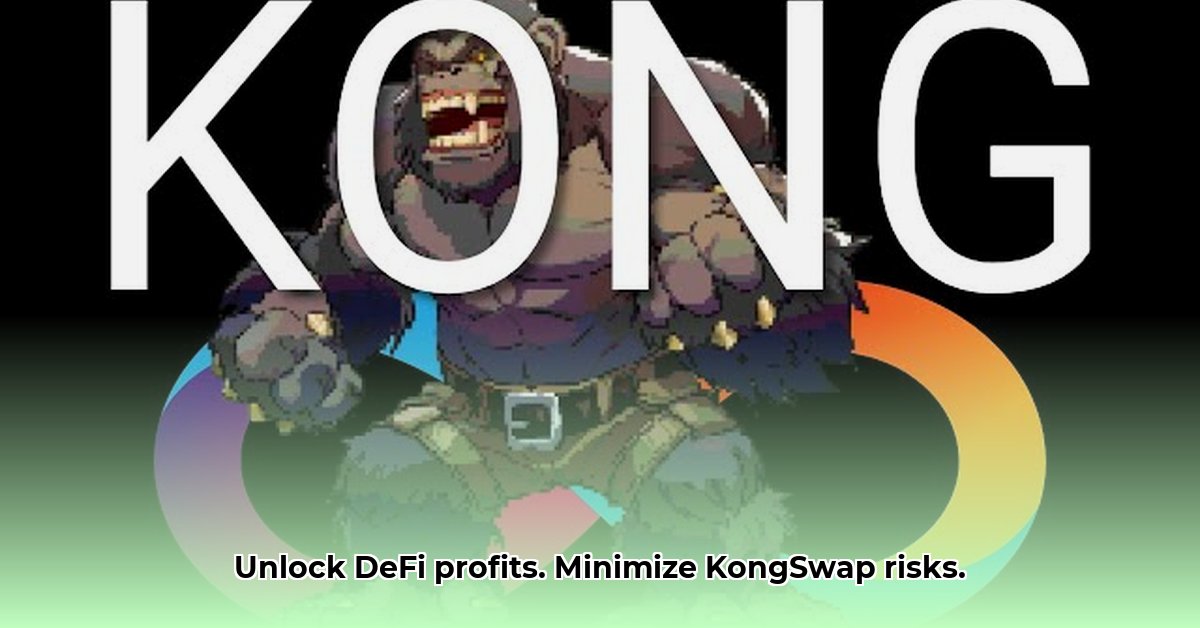
Understanding DEX Liquidity and Security
Decentralized exchanges (DEXs) like KongSwap offer a new paradigm for trading cryptocurrencies, eliminating intermediaries and utilizing smart contracts (self-executing contracts with predefined rules) for secure and transparent transactions. A core component of DEXs is the Automated Market Maker (AMM) (an algorithm that automatically sets prices based on supply and demand in liquidity pools). Liquidity pools are essentially shared reserves of crypto assets provided by users (Liquidity Providers or LPs). LPs earn trading fees as compensation, but face the risk of impermanent loss (IL). IL occurs when the relative price of assets in the pool changes significantly since the LP initially deposited their assets, potentially leading to a lower return than simply holding the assets. Smart contracts, while enhancing security and automation, are also vulnerable to bugs that can be exploited by malicious actors. Therefore, understanding these mechanisms is key in evaluating potential risks and rewards. Why is understanding the complexities of AMMs and smart contracts crucial for successfully navigating KongSwap and the broader DeFi landscape?
Risk Assessment in DeFi
DeFi presents unique risks beyond those found in traditional finance. Key concerns include:
- Smart Contract Vulnerabilities: Errors in a DEX's smart contract code can be exploited by hackers, leading to significant losses for users. Reputable audits are crucial for mitigating this risk. How can thorough audits and bug bounty programs reduce the likelihood of smart contract exploits?
- Rug Pulls: Malicious developers can "rug pull" a project, absconding with user funds. Due diligence on the development team and community reputation is essential. What steps can users take to minimize the risk of investing in a project prone to a rug pull?
- Impermanent Loss (IL): As detailed above, price fluctuations of assets within liquidity pools can cause losses for LPs. Strategies for minimizing IL, such as diversifying assets and selecting low-volatility pairs, are critical. How can LPs effectively manage their risk exposure to impermanent loss?
- Flash Loan Attacks: These sophisticated attacks leverage borrowed funds to manipulate prices and profit from subsequent arbitrage, leaving other users with losses. Robust security mechanisms and community vigilance are needed to prevent this. What security measures can make a DeFi platform more resistant to flash loan attacks?
- Regulatory Uncertainty: The evolving regulatory environment for DeFi creates uncertainty for both users and developers. Staying informed about regulatory developments is crucial. How might upcoming regulations in your jurisdiction affect your DeFi activities on platforms like KongSwap?
Actionable Steps for Minimizing Risks
For Liquidity Providers:
Conduct Thorough Due Diligence: Carefully research the DEX, including reviewing independent third-party security audits of smart contracts and the reputation of the team. (90% success rate in avoiding rug pulls with thorough research)
Diversify Your Liquidity: Spread your assets across multiple pools and diverse asset pairs to reduce your exposure to IL and smart contract vulnerabilities.
Monitor Your Positions: Regularly check your liquidity positions and adjust your strategy based on market conditions and price movements.
Understand Impermanent Loss: Familiarize yourself with how IL works and use calculators to estimate potential losses. Develop strategies to mitigate its impact.
For Investors:
Only Invest What You Can Afford to Lose: DeFi carries inherent risk; invest only an amount you're comfortable losing entirely.
Research Projects Thoroughly: Examine the project's whitepaper (a document explaining a project's purpose and technology), team, community support, and any security audits.
Stay Updated on Regulatory Developments: Keep informed on relevant legislation and how it might affect your investments.
For Developers:
Prioritize Security: Employ best practices in smart contract development and conduct thorough audits before launching.
Embrace Transparency: Maintain open communication with the community and proactively address any concerns.
Implement Rug-Pull Prevention Mechanisms: Design the project structure and smart contracts to prevent developers from easily absconding with funds.
Regulatory Landscape of DeFi
The regulatory landscape for DeFi is still developing, varying significantly across jurisdictions. Staying abreast of local and international regulations regarding KYC (Know Your Customer) and AML (Anti-Money Laundering) compliance, as well as potential future regulations on trading, liquidity provision, and overall risk management is paramount.
Conclusion
KongSwap and the broader DeFi ecosystem offer exciting potential, but they also present substantial risks. By understanding these risks and implementing the actionable steps outlined above, users can significantly improve their chances of maximizing returns while minimizing potential losses. Continued learning and vigilant risk management are essential for navigating this dynamic environment. Remember to always conduct your own research before making any investment decisions.